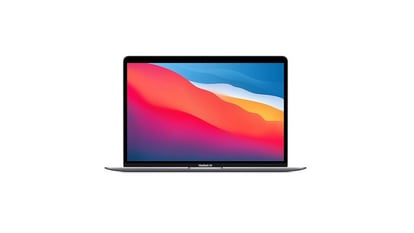How digital payments are benefiting small businesses
While uncertainty persists even today along several dimensions, the ongoing digital transformation of small and medium-sized businesses will matter for everyone from the smallest retailers to the largest lenders.


India's digital adoption journey accelerated significantly back in 2016, with the declaration of demonetisation. Within the next three years of the move, UPI announced a record high of one billion transactions, leaving a dent in India's payments ecosystem for a phenomenal trajectory ahead.
The transformations set in motion by the note ban and subsequent GST policy have been further accentuated by the ongoing pandemic. Government-imposed guidelines and restrictions have underscored the need for e-payments, compelling businesses to digitise to stay in the game. Our internal data reveals a record increase of 130% growth in merchant sign-ups in FY21 vis-a-vis FY20, indicating an incremental rise in digital adoption. These figures attest to the fact that businesses, especially SMBs, continue to amplify their focus on creating digital-first experiences for the new-age consumers.
Adoption of Software Services by SMBs
While uncertainty persists even today along several dimensions, the ongoing digital transformation of small and medium-sized businesses will matter for everyone from the smallest retailers to the largest lenders. With consumers switching to digital payments from CoD, businesses have also begun streamlining payments and payouts, in some cases kickstarting their digital journeys and catering to evolving preferences. Software as a Service (SaaS) products and fintech services have found traction to enable SMBs to turn digital-first. In addition to online payment collections and payouts, automating services like accounting, tax filing, access to credit, are helping create more sustainable business models to sustain growth, profitability and compliance.
Tapping a Wider Demographic via Low-code & No-code Solutions
A lot of small businesses, institutions and organisations offering services in rural parts of the country lack the resources to set up a full-fledged digital infrastructure. Several industry breakthroughs coupled with today's innovations have made the switch easy, eliminating the need for technical know-how. The transition can be made simply by purchasing or integrating a payments solution to ensure an internet-first approach.
Various small and mid-sized models spread across tier 2 and 3 cities, towns and villages, were able to quickly digitise payments through smart, tailor-made integration options. This further entrenched online transactions in the ecosystem by helping businesses offer their users easy alternatives, such as payments through links, to facilitate wider adoption and deeper penetration.
Fostering a Chain of Glocal Companies: Helping local companies expand globally
Safe and secure online transactions have opened doors to global trading and cross-border transactions, helping small merchants and traders expand operations and make their offerings available internationally. From accepting payments in multiple currencies to ensuring safe and seamless experiences, digital payments are now providing a push to homegrown brands, artists, and small-town traders, empowering them with the capabilities to reach a much larger consumer base. Independent merchants operating in tier 2 and 3 zones now have the opportunity to scale their business by taking indigenous products to international markets. Getting paid for exporters and claiming tax benefits for the same is being facilitated by cross-border payment service providers operating under RBI's OPGSP guidelines.
The Rise of D2C brands and e-commerce enablers
E-commerce enablers and pandemic induced shift of traditional offline retailers to a mixed omnicommerce approach has helped the proliferation of Direct to Consumer e-commerce brands, bypassing larger e-commerce marketplaces. It has also built an entire ecosystem of applications and systems. From shipping platforms, website builders to billing systems to supply chain management, omnicommerce models are using several disparate systems to manage inventories, host products, process transactions, manage logistics, facilitate online and in-store returns, and more. Businesses are identifying those aspects which can be digitised, automating operations for efficient, scalable growth.
Additionally, social buying and selling have gained immense popularity among the new-age audience as well as older age groups, some of whom were social media novices until recently. Selling through Facebook Marketplace, WhatsApp and Instagram has not only provided a targeted approach to sellers with focused ads and user interest-related promotions but has also helped businesses tap a customer base that loves socialising and shopping on these platforms.
Since 2012, D2C brands have mopped over $4 billion in funding, and currently, the segment is eyeing a $100 billion addressable consumer opportunity in India by 2025. The increased simplicity ushered in by the era of digitisation and innovation has made these projections possible. Shipping, logistics, handling, automating inventory management and global distribution chains, technological upgrades, and industry-first solutions have ironed these dynamics to carve a remarkable growth trajectory for the segment in the next few years.
With the internet population projected to reach 900 million by 2025, customers now expect an omnichannel experience that is both personalised and consistent. This refined consumer preference has catalysed innovation across legacy set-ups, compelling sectors to pivot. Adapting to changing customer behaviour has been one of the biggest business challenges and opportunities. The key to meet these needs and expectations lies in providing a frictionless shopping experience across e-commerce platforms and marketing channels. While the gains will be varied across sectors, businesses that anticipate and renovate for the post-pandemic market will be the ones that come out on top.
This article has been written by Reeju Datta, Co-founder of Cashfree
Catch all the Latest Tech News, Mobile News, Laptop News, Gaming news, Wearables News , How To News, also keep up with us on Whatsapp channel,Twitter, Facebook, Google News, and Instagram. For our latest videos, subscribe to our YouTube channel.

























